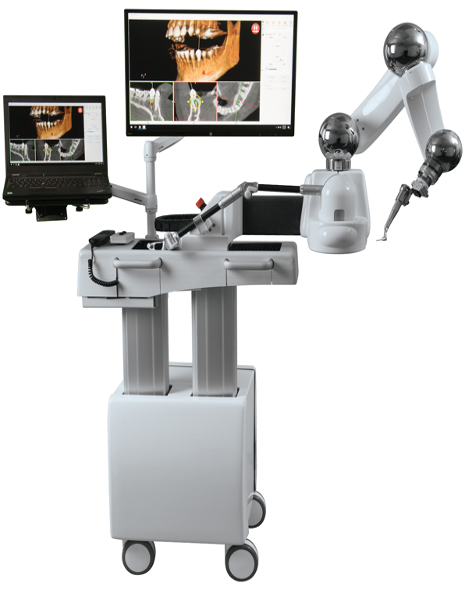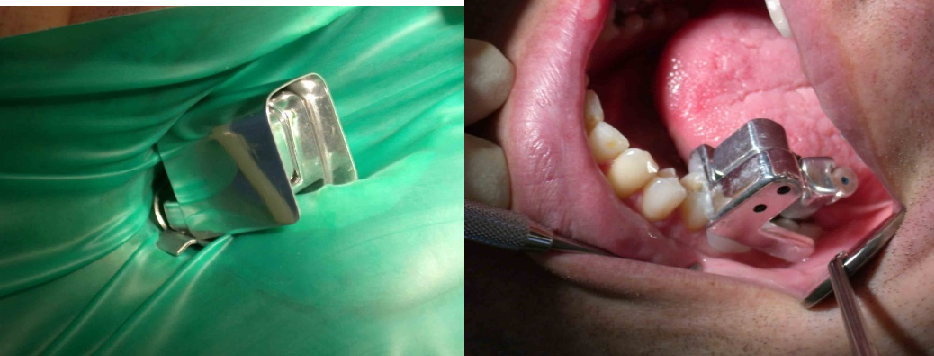Introduction
In 2017, a robot performed two dental implants on a woman in China, heralding a new era that could be characterized by the automation of dentistry. The doctors involved only supervised the operation; they did not actively participate in either of the procedures. While many people believe that robots will not take over dentists’ jobs, some argue that robots will replace dentists in the next few decades. Surveys have shown that recent developments in technology have greatly contributed to the widespread use of robotics in the field of dentistry because of their enhanced accuracy and the precision of the dental procedures. “The intervention of robotics in the field of dentistry can offer improved and precise treatment with good quality of work in a less amount of time” (Kumar et al. 279). They are also effective in streamlining work processes, thus helping in the provision of quality care. I believe that robots will replace dentists in the future because of the need for advancement and better care in dentistry.
Robotics in Dentistry
Recent developments in technology have led to the widespread application of innovation in this field. Nanotechnology, navigational dentistry, and robotics are examples of technologies that are paving the way for the automation of the profession (Sun et al. 57). Robotics are applied in numerous ways: they are used in the placement of instrumentation, repair of oral lesions, implant treatment, and in conducting dental surgeries. Robotic systems are used because of their enhanced accuracy and precision (Bhat 67). Moreover, they are effective in streamlining work processes, thus helping in the provision of quality care. Current applications of AI have been monumental in the maintenance of oral health and in the development of new diagnostic procedures and therapeutic treatment modalities (Kumar et al. 278). In many areas, dentists are using robotics to conduct certain procedures and implant treatments (Bhat 67). Innovations that are under research and development will be used in key areas, including orthodontics, endodontics, periodontics, and restorative dentistry.
The Replacement of Dentists with Robots
With current technological developments, it is becoming clearer that in the next few decades, dentists will be replaced by robots, and the profession might be fully automated. Surveys have shown that many healthcare facilities are using robotics for many purposes, including digital impressions, digital laser measurements, dental fillings, dental implants, and digital milling (Bhat 67). As mentioned earlier. A robot dentist performed two implants on a woman in China. The surgery was reported as the first fully automated dental implant surgery by a robot without human intervention (Lui). Even though doctors monitored the procedure, they did not play an active part. The robot conducted the operations based on pre-programmed commands that offered guidance on how to complete the procedure, and “the implants were fitted within a margin of error of 0.2-0.3 mm—matching the standards required for this type of procedure (Lui par. 3). The technology used was invented by the Stomatological Hospital and Beihang University, and it demonstrated that it was possible to automate dentistry.
Robots will replace dentists because AI is providing solutions that are enhancing the accuracy and precision of dental procedures. One of the challenges of dentistry as practiced by human beings is the prevalence of medical errors and the failure of implants. A combination of technology and dental expertise could be used to address the challenge of frequent surgical errors through the automation of dentistry (Bhat 67). The performance of procedures without human intervention lowers the risk of errors and improves the quality of care. Human errors are prevalent because certain areas in the mouth are tiny and inaccessible, thus making the administration of oral surgery difficult (Kumar et al. 279). However, robots can mitigate this problem because they can “safely conduct dental surgeries like implantations with more accuracy and agility in a narrow space like the oral cavity” (Lui par.4). In 2017, the Food and Drug Administration (FDA) approved Yomi, the first robotic system to be used in dentistry in the United States (Lui). Unlike the Chinese system, Yomi acts as an assistant, and is controlled by the dentist while conducting pre-operative and intra-operative surgeries. The increased usage of Yomi in America is proof that many dentists are willing to mechanize certain procedures while keeping control over others.

Several dental fields are using robotics and dynamic navigation (DN) technologies to improve the reliability, efficiency, and safety of dental procedures. Dental navigation technologies are “auxiliary systems for implantations; such systems are based on medical imaging technology in combination with optical positioning” (Sun et al. 57). Endodontic microrobots are widely used to improve the safety of procedures by lowering the occurrence of common errors such as improper canal preparation, incorrect direction of equipment, and the shedding of the apical foramen (Webb and Sommers).

The outcomes of oral treatments vary immensely, and they are largely determined by the proficiency of the dentist. However, endodontic microrobots can bridge the skill and knowledge gap by reducing errors and providing the highest quality of dental care (Webb and Sommers). For example, some innovations use micromachine technology, that even though it is human-controlled, it performs root canal procedures in an error-free manner (Kumar et al. 279). The automation of precision probing, filling, cleaning, and drilling ensures that human errors are minimized and the safety of the patient is enhanced (Sun et al. 59). Many dental procedures involve health risks such as “injury due to perforation of the maxillary sinus, inferior border, lingual plate, labial plate, or inferior alveolar canal; nerve injury; tissue necrosis; and dehiscence” (Webb and Sommers par. 2). Moreover, complications that occur during the placement of implants can have adverse outcomes on the health of patients. Research has shown that the rate of failure of implants is relatively high, hence the need for better care. These have been attributed to the lack of clinical experience, medical errors, and the presence of health complications during treatment (Bhat 67). The use of robotics and navigational surgery can mitigate these problems and increase the efficacy implants and surgeries.
Nanotechnology is another field of technology that will lead to the automation of dentistry. It involves the development of tiny robots known as nanobots that can be used to perform delicate procedures (Webb and Sommers). “Application of nanotechnology in dentistry, also known as nanodentistry, allows for treatment possibilities in restorative dentistry, orthodontics, and periodontics” (Webb and Sommers par. 7). Currently under development, the innovation will be used to improve the processes of diagnosis, treatment, and surgery. Nanodentistry has been cited as a key component of the future’s profession because of its wide scope of application that ranges from orthodontics to periodontics (Webb and Sommers). Robots can be used for various uses in the aforementioned areas. For instance, in restorative dentistry, their application can range from cavity preparation to the restructuring of dentition. Their effectiveness is based on the fact that they work at the cellular level, and so, they can be used to perform delicate tasks with precision (Webb and Sommers). Nanotechnology can also be useful in the administration of drugs and bone replacement. Robots have also gained widespread application in the area of dental training. A robot that is created in the form of a human being is used by dentists in training to gain hands-on skills on key dental procedures.
Counterarguments and Rebuttal
Critics of automation in the field of dentistry argue that it is impossible to fully automate the field because of the need for human compassion in treatment. A survey conducted by researchers at the Embry-Riddle Aeronautical University in Florida revealed that many people would be unwilling to let robots perform certain procedures on them. They argued that machines are not refined enough to perform intrusive procedures such as gum surgery and root canals. They were willing to let robots only perform procedures such as teeth cleaning, extraction, and whitening. Others argue that procedures such as shading and staining are better done by a human because of the attention to detail that a robot cannot afford. The compassion of a human being cannot be transferred to a robot, and it is a very significant aspect of dentistry. A human dentist assists the patient to relax and combat their fear of undergoing a painful and invasive procedure. Research has shown that robots can mimic human compassion because they can be programmed to recognize pain and stress in human beings. Dilated pupils, high blood pressure, and elevated rates of respiration are registered by robots as signs of distress in an individual.
Machines cannot express empathy or recognize the facial expressions that signify human suffering. However, the accuracy, safety, and precision of their operation supersedes the need for compassion. Moreover, computer-assisted relaxation learning (CARL) can be used to replace the aspect of human compassion and help patients to overcome their fears. Robots can be taught to perform a wide variety of dental procedures that human beings do. Opponents of automations are so fixed on the need for the compassion of human interaction that they disregard the numerous benefits of robotics. Enhanced patient safety, the minimization of medical errors, and faster and more efficient service supersede the rejection of robots in favor of empathy. The existence of an autonomous dental robot and the automation of dentistry might be several years away from attainment. However, with current innovations, increased adoption and implementation of these technologies could hasten the process. This is evident from the results obtained by countries that are willing to innovate and integrate new technologies into medical practice.
Conclusion
The application of robotics in the medical field has gained momentum in the last few decades. This has led to the debate as to whether robots will replace dentists due to automation. The performance of two dental implants by a robot in China is proof that the field of dentistry is heading toward automation. Moreover, the approval of Yomi, the first mechanical system to be used in the United States is evidence that robots are gaining acceptance in the profession. The need for advancement and better care in dentistry will lead to the use of robots and the eradication of human dentists. Current developments in AI and robotics have shown that dentistry is on the verge of automation, even though its adoption has been slow. The main goal in dental health care is to provide high quality and safe services to patients. Therefore, the precision, and accuracy of robots, as well as their enhanced safety makes them an important tool in the provision of optimal dental care. Robots can be used to improve the processes of diagnosis, treatment, and surgery.
Works Cited
Bhat, Divya, et al. “Robotics in Dentistry: Fiction or Reality.” Journal of Dental Research and Review, vol. 4, no. 3, 2017, p. 67, Web.
Dong, Janet, Hong, Shane, and Gannar Hesselgren. WIP: A Study on Development of Endodontic Micro Robot. Proceedings of the 2006 IJME-INTERTECH Conference, 2007, Web.
Kumar, Pradeep, et al. “Future Advances in Robotic Dentistry.” Journal of Dental Health, Oral disorders & Therapy, vol. 7, no. 3, 2017, pp. 278-280.
Lui, Kevin. A Chinese Robot Has Performed the World’s First Automated Dental Implant. Time, 2017, Web.
Sun, Ting-Mao, et al. Dental Implant Navigation System Guide the Surgery Future. The Kaohsiung Journal of Medical Sciences, vol. 34, no. 1, 2018, pp. 56-64.
Webb, Alicia, and Shannon Sommers. Innovations in Dentistry: Navigational Surgery, Robotics, and nanotechnology. DentistryIQ, 2020, Web.